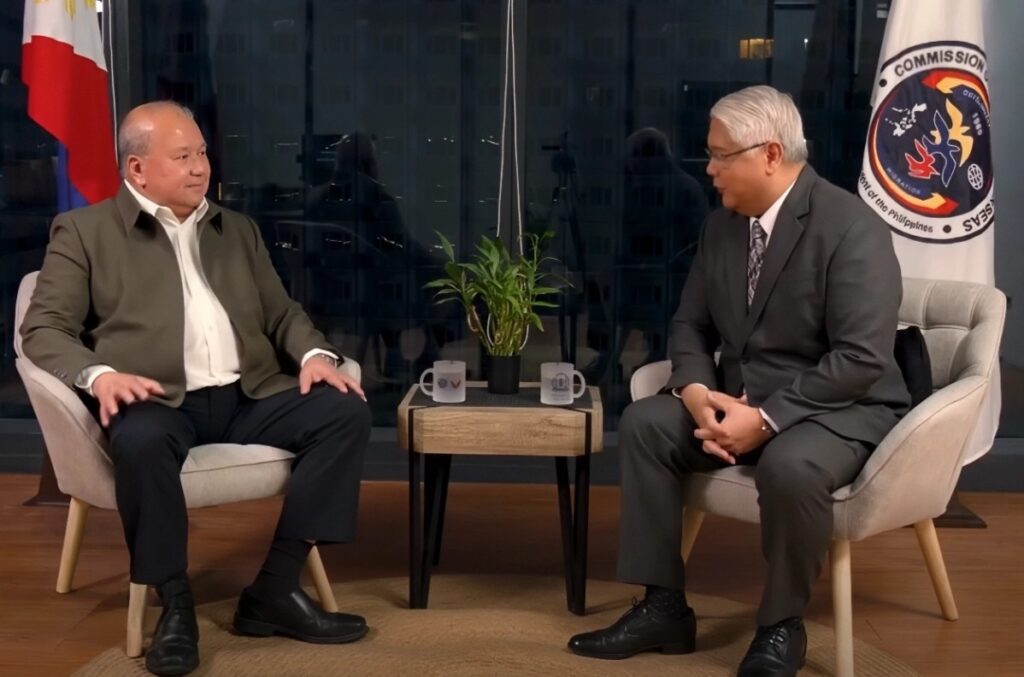Philippines seeks to be retirement destination of choice
The Philippines is stepping up efforts to become one of the world’s most attractive retirement destinations, leveraging its natural beauty, affordable cost of living, and the warmth of its people to draw foreign nationals and returning Filipinos, or balikbayans. Central to this push is the Philippine Retirement Authority (PRA) and its flagship Special Resident Retiree’s Visa (SRRV) program.
PRA chief executive Roberto “Bob” Zozobrado said the country is positioning the SRRV as more than a vacation option. In an interview on IBC-13’s The Chairman’s Report hosted by Commission on Filipinos Overseas chairperson Dante “Klink” Ang II on October 10, Zozobrado said, “The Philippines is not just a vacation spot — it’s a place to live your golden years in comfort and community.”

The SRRV offers foreign retirees and former Filipinos indefinite multiple-entry privileges, tax incentives, healthcare access, and investment opportunities without requiring property purchases. Combined with low living costs and widespread English proficiency, these benefits give the country a competitive edge over established retirement destinations such as Spain, Portugal, and Malaysia. Popular areas for retirees include Metro Manila, Cebu, and Dumaguete, with growing interest in cooler cities such as Baguio and Tagaytay, as well as eco-tourism hubs across the islands.
Recent policy changes are expected to make the Philippines even more competitive. Beginning September 2025, the minimum age requirement for SRRV applicants will be lowered from 50 to 40, aiming to attract early retirees, entrepreneurs, and digital nomads seeking a tropical base with modern conveniences. In 2024, the PRA and the Bureau of Immigration signed a data-sharing agreement to strengthen background checks and ensure a more secure and transparent application process.
Since its establishment in 1985, the SRRV program has already issued more than 77,000 visas to foreign retirees and former Filipinos, providing multiple-entry privileges, healthcare access, and tax incentives. Around 61,000 active holders contribute to the economy through housing, tourism, and local spending.
The agency targeted 3,850 new retirees in 2024 under its “Love to Live in the Philippines” campaign, aiming for steady annual growth of about 20% through 2028. Most current retirees come from China, the United States, India, and South Korea, with an increasing number of Europeans and North Americans considering the Philippines as a second home.
Zozobrado emphasized that while natural charm and affordability attract retirees, developing purpose-built retirement communities is critical. “We need to build more integrated communities with healthcare, leisure, and security — not just condos,” he said, urging developers to expand beyond residential towers to full-service estates designed for long-term living.
CFO chairperson Ang added that the retirement sector also strengthens ties with the Filipino diaspora. “Retirement investment is another form of diaspora engagement,” he said. “When former overseas Filipinos choose to retire in the Philippines, they reinvest their resources and experiences into the country, strengthening our global connection.”
Experts note, however, that the Philippines must address infrastructure and healthcare gaps to fully compete with regional retirement leaders such as Thailand and Malaysia. While major urban centers offer reputable private hospitals and international schools, rural and emerging retirement areas often lack advanced medical facilities and reliable transportation networks. Efforts to improve healthcare access and promote sustainable tourism could enhance the country’s appeal to higher-value retirees.
The global retirement market is expanding rapidly, driven by aging populations and a rise in mobile, financially independent professionals. With its English-speaking population, relatively low cost of living, and welcoming culture, the Philippines stands to benefit if policy, infrastructure, and investment are aligned effectively. For retirees, the attraction lies not only in climate and affordability but also in a sense of community and belonging that is distinctively Filipino.
As Zozobrado put it, “What truly makes the Philippines unique is its people — the hospitality, the care, the sense of belonging. That’s something money can’t buy.” That human connection, paired with policy reforms and renewed investment, may well make the country one of the world’s favorite places to grow old gracefully.



0 Comment